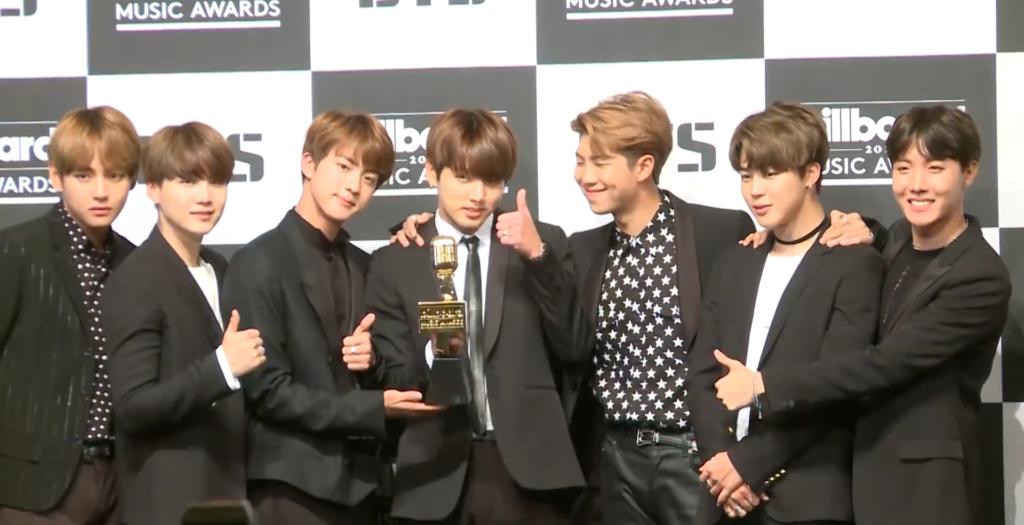The Peninsula
Hallyu 3.0: The Era of K-pop Collaborations

By Jenna Gibson
In the mid to late 2000s, Korean pop music burst onto the scene in Asia, capturing the imagination of fans in China, Japan, Malaysia, and elsewhere. The next wave of Hallyu started bringing Latin America, Europe and parts of the Middle East into the fold, bolstered by the growing popularity of YouTube and other social media channels that helped international fans connect with Korea-based stars.
But now that K-pop stars have established a certain amount of fame in different markets across the globe, we’re seeing another surge in interest for Korean pop music, particularly in the United States, ushering in the era of Hallyu 3.0. And one of the main markers of this new period in K-pop history is a noticable increase in the number of international collaborations between Korean and non-Korean artists. The new strategy of Hallyu 3.0 uses this type of collaboration to achieve two major goals – expand audiences beyond die-hard K-pop fans, and reward loyal international fans with music that caters to their culture and language.
Going Gold
One of the latest and clearly the biggest of these collaborations is BTS’ “Mic Drop Remix,” a remastered version of their Korean single that mixed in some English verses and featured famous American DJ/Producer Steve Aoki. The remix’s music video has racked up 225 million views on YouTube in just four months, and recently became the first song by a Korean group to be certified gold by surpassing 500,000 units sold (Psy is the only other Korean artist to hold this honor).
It makes sense for Korean artists to use collaborations and English versions of songs as a way to position themselves for American success. In a recent KEI podcast, Katie Brownlie, who hosts a weekly K-pop radio show in New Jersey, said that the language barrier has been one of the biggest obstacles for Korean singers who want to break into the United States. “It’s hard to break into the American market if it’s not in English,” she said.
This isn’t to say that English-language songs or big collaborations are an automatic ticket to success by any means. In fact, up until BTS’ Mic Drop remix, collaborations in the United States have largely failed to capture mainstream attention outside of existing K-pop fandom.
Riding high on the success of Gangnam Style, in 2014 Psy came out with the noisy, repetitive “Hangover” featuring Snoop Dogg – needless to say, it fell short of the sky-high expectations set by his viral hit. That same year, Psy’s labelmates, CL and G-Dragon teamed up with well-known DJs Skrillex and Diplo for “Dirty Vibe,” and CL has since done several other collaborations with American artists in the lead up to her long-awaited American debut. Other K-pop groups have used similar tactics in an ultimately unsuccessful attempt to break into the American market, like the Wonder Girls’ English song “Like Money,” which featured Akon.
None of these collaborations catapulted these K-pop stars into the mainstream in the way they may have hoped, perhaps because they got ahead of themselves. If BTS’ American success has taught Korean entertainment companies anything, a strong fanbase who are willing to spend hours calling local radio stations and requesting songs can be far more powerful than a handful of big-name collaborations. Once that fanbase is successfully established, then a powerhouse collaboration can tip the scale and bring a group into the mainstream consciousness. This is part of the second prong of Hallyu 3.0 – for fans who already devote their time and money to a Korean group, they can now listen to collaborations with American artists they may also know and love, and in a language they already speak.
En Espanol
You may notice that all the collaborations mentioned above are with American artists, and are largely aimed at increasing popularity in the notoriously tough American market. But Spanish-speaking fans are starting to get some collaboration love as well.
Although k-pop artists have done covers of Spanish songs before – often during concerts or events held in Latin America – collaborations are few and far between. Perhaps the first Korean-Spanish collaboration was girl group Crayon Pop’s work with Mexican boy band CD9 back in 2016, which resulted in the trilingual party anthem “Get Dumb.”
Now, K-pop legends Super Junior have teamed up with Latin-pop’s Leslie Grace for their new single, Lo Siento, which mixes lyrics in Korean, English and Spanish throughout. Grace will accompany the group on their Latin American concert tour this week to perform the song and possibly show off other collaborative stages.
Like many of the American collaborations mentioned above, this project aims to increase their popularity in the region outside of those who already love the group. In fact, SM Entertainment, the group’s agency, said “The reception of ‘Lo Siento’ in the Central and South American region is explosive. We want to expand our business in the region on the back of Super Junior’s regional tour.”
The Next Wave
It is likely that we’ll see more international collaborations from K-pop stars in the future, especially after the runaway success of BTS’ Mic Drop. In fact, BTS has also worked with The Chainsmokers and Fall Out Boy, and the group is rumored to be working with other top American artists including Halsey, Shawn Mendes, and maybe even Maroon 5. Other groups will likely be watching these collaborations closely. It will be interesting to see if groups take this tactic into other regions where K-pop is popular – will we see some Arabic or Tagalog collaborations next?
Jenna Gibson is the Director of Communications at the Korea Economic Institute of America. The views expressed here are the author’s alone.
Photo from Wikimedia Commons.
